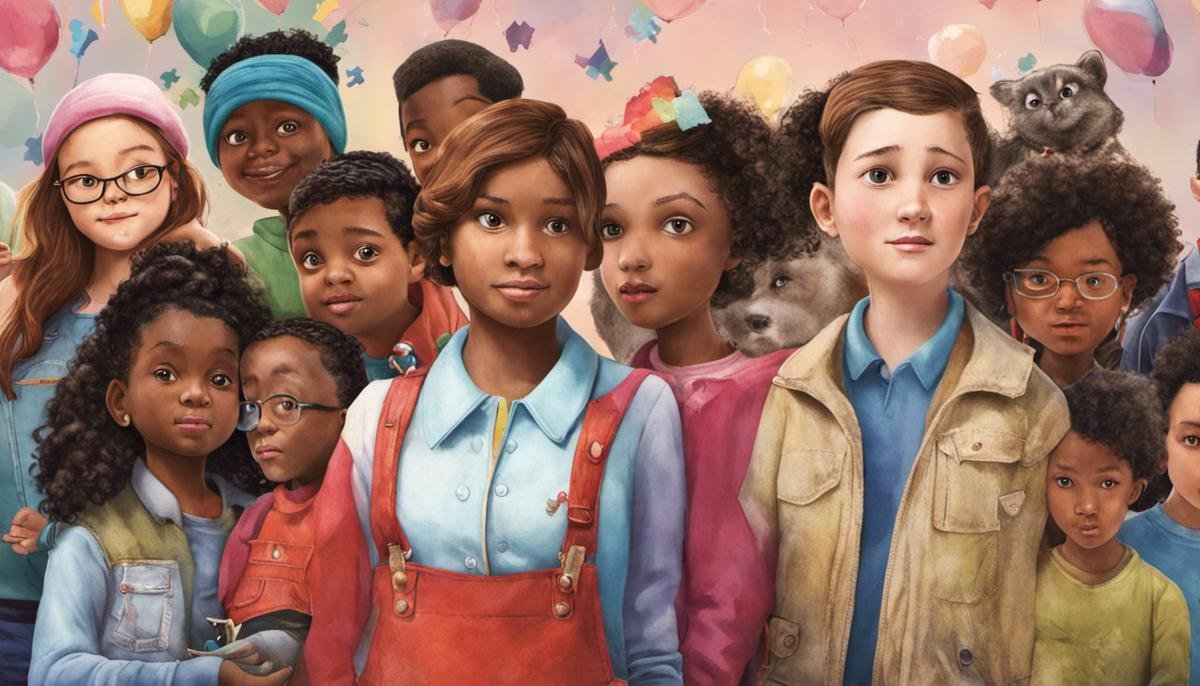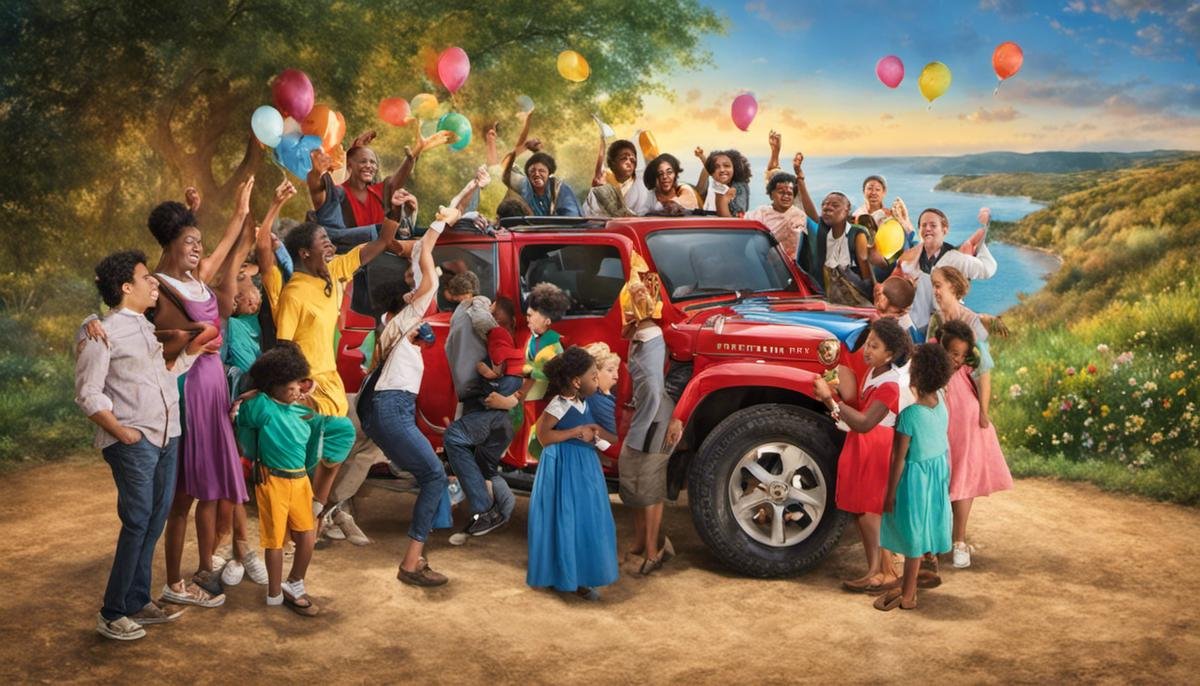
Autism, a developmental disorder affecting social skills and communication, is unfortunately often misunderstood and met with prejudice and sterotypes. This pervasive stigma can further isolate individuals with autism and their families, amplifying the challenges they face. It’s through understanding and recognizing these misconceptions that we can begin to foster an inclusive society that celebrates diversity rather than disregarding it. Furthermore, significant stakeholders in the lives of those affected with autism such as family, friends, and caregivers have a profound role in creating this accepting atmosphere by focusing on the strengths and uniqueness of the child rather than solely their diagnosis.
Understanding and Recognizing the Stigma of Autism
Dispelling the Myths: Shining a Light on Autism Misconceptions
Why is it that for a condition as prevalent as autism, a surprising number of misconceptions still persist? Given that one in 54 children have been identified with autism spectrum disorder (ASD), it’s a stark indication of the critical need for increased awareness to challenge these firmly entrenched misconceptions.
Misconception #1: People with Autism Lack Emotion
One persistent myth is that individuals with autism are incapable of experiencing or expressing affection. Truth be told, this couldn’t be further from the actuality. While it’s true that they may express emotions differently than neurotypical individuals, those with ASD are fully capable of forming emotional bonds and connections with their loved ones. The toll of this misconception can be arduous for both individuals with ASD and families who are left to manage these misleading perceptions.
Misconception #2: Vaccines Cause Autism
Despite a considerable body of scientific evidence debunking this myth, the misconception that vaccines cause autism has stubbornly persisted. This erroneous belief has dangerous repercussions, leading some parents to risk their children’s health by forgoing life-saving immunizations. The harm of this stigma feeds into misinformation and propels a cycle of fear that needs to be conquered with factual reassurance.
Misconception #3: Autism is a Diseased and Unwanted Condition
Transcending this damaging misconception that autism is a “disease” or “curable malady” is vital. It’s not accurate – nor is it even helpful – to perceive or label autism as a disease. Rather, it’s a unique neurological variation and a part of who the person is. This misconception can stoke feelings of blame, guilt or shame in families, which is a burden they should not have to bear.
Misconception #4: Individuals with Autism are All Alike
Just like neurotypical individuals, those with ASD also have their unique characteristics, strengths, likes, dislikes, and coping mechanisms. Autism is a spectrum disorder, meaning its manifestation varies widely from individual to individual. Stereotyping individuals with autism can devalue their personal experiences and strengths, creating additional barriers for acceptance and recognition.
Misconception #5: Only Children are Affected by Autism
Autism is not a condition that one simply outgrows. Instead, it’s a lifelong journey that continues into adulthood. A common misunderstanding that autism only affects children can lead to difficulties in accessing services, support, and understanding for adults with autism.
The persistence of these misconceptions and stigmas can profoundly impact individuals with ASD and their families. Not only do they cast shadows of misunderstanding over the lived experience of autism, but they also create barriers to knowledge, empathy, and inclusivity. However, by educating ourselves and others, embracing diversity, promoting understanding, and refuting these misconceptions with evidence-based insight, society can assist in making the world a more accepting place for those on the autism spectrum.

The Role of Family and Friends
Dispelling Stigmas and Promoting Acceptance for Children with Autism: A Team Effort
Living in a world of diversity and inclusivity means embracing all individuals, including those who experience life a tad differently, like children diagnosed with Autism Spectrum Disorder (ASD). Autism, in its essence, is not a curse but a different perspective, a uniquely colored lens through which the world is perceived and experienced. It’s time we warm-heartedly accepted children with ASD and encouraged their inclusion in society, just like any other child.
Encouraging the acceptance and understanding of children with autism starts at home, within the family unit. It’s crucial for family members to shift their perspective from perceiving autism as a limitation, to viewing it as simply a different way of experiencing the world. By educating oneself about autism, families can break down prejudices and misconceptions. Reading up on reliable resources, consulting with specialists, or even joining support groups can make a significant difference.
Yet, the role of friends and social acquaintances is equally critical. It’s often through day-to-day interactions that stigmas persist or dissipate. Educating friends and peers about the unique needs and abilities of children with autism is crucial. Encouraging play dates, promoting inclusion in group activities, and discouraging any form of discrimination or mockery should be carried out actively.
Moreover, caregivers – those trusted individuals bestowed with the responsibility of nurturing and caring for children with autism, hold a key role in this endeavor. Alongside providing fundamental care, they should adapt an empathetic, patient, and understanding approach. Educating themselves about the individual child’s unique characteristics, abilities, and needs can accelerate the acceptance process, both on their part and the community’s.
Schools and educational institutions also have an iron in this fire. Teachers should foster an inclusive classroom environment, ensuring that children with autism are not left isolated or unsupported. Introducing elements of ASD education in the school curriculum can be massively helpful in promoting understanding and cooperation among peers.
Perhaps an often overlooked, but significant part of the equation are community organizations and local businesses. Through promoting inclusivity and rethinking their accessibility strategies to suit individuals with autism, these entities can lead by example. This might include offering sensory-friendly environments or arranging specific hours on certain days dedicated to families and children with autism.
Living in an age where empathy and understanding are paramount, it’s essential to remember that every child, regardless of their neurological make-up, deserves respect, love, and a sense of belonging. Dispelling stigmas associated with autism is a collective responsibility, a communal mission that starts with education, understanding, acceptance, and unconditional love. It’s a team effort and every player counts!

Public Education and Awareness
Public education and awareness are critical in diminishing the stigma around autism and fostering a more understanding and accepting society. Society, in turn, can play crucial roles in several ways to further this goal.
Resource Sharing and Awareness Campaigns
Public entities, nonprofit organizations, the media, and individuals can significantly contribute by raising awareness and sharing accurate, research-based information about autism. Hosting community awareness campaigns, spreading information through social media, or contributing autism-focused articles, videos, and podcasts can all help embrace autism rather than stigmatizing it. Information is the antidote to ignorance, and in this case, it can effectively counteract misconceptions and promote a more compassionate response to those on the autism spectrum.
Proactive Engagement through Supportive Legislation
While not everyone may have direct contact with someone with autism, that doesn’t mean they can’t contribute to a more inclusive society. Policy changes and legislations, such as mandating autism education in schools or imposing penalties for discrimination, can create a society-wide shift. Advocating for laws that promote equality, inclusivity, and accessibility for individuals with autism is a major way society can contribute.
Promoting Effective Autism Education
Effective autism education is more than just providing information; it aims to change perceptions and behaviors. It would help if society encouraged autism education that goes deeper than surface-level knowledge. It could involve inviting speakers with autism to share their experiences, involve real-life scenarios or simulations to promote empathy, or workshops that challenge stereotypes and encourage broader perspectives. Such strategies can help understand the complexities of the autism spectrum and appreciate the uniqueness of those living with it rather than stigmatizing them.
Building Stronger and Inclusive Communities
Instead of leaving people with autism on the sidelines, society should encourage the active participation of individuals with autism. Whether it’s school settings, workplaces, or public spaces, society must strive for inclusivity. Creating autism-friendly spaces, engaging them in community activities, or employing persons with autism can optimum opportunities for them to thrive and for others to interact and learn from them.
Ending the stigma around autism isn’t a swift process, but it’s one everyone can contribute to. It starts with eradicating misconceptions and promoting understanding and acceptance, moving towards a future where anyone on the autism spectrum can feel valued for who they are. After all, a diverse society is a resilient one, and that includes individuals with autism.

The Power of Positive Representation
Positive Representation: A Powerful Tool for Change
From ageless fairy tales to ambitious animations, media and literature have significantly influenced our perception of the world and those who inhabit it. For individuals with autism, this collective narrative hasn’t always been kind. Stereotypes and misinformation often rule the day, leading to a societal bias that’s desperate for change. Thankfully, this change looks to be on the horizon, with increasing advocacy for positive representation of persons with autism in media and literature.
It’s not just about changing a storyline or humanizing a character but reshaping the long-standing stigma associated with autism. When characters with autism are portrayed respectfully and authentically, they serve as important role models, breaking down misconceptions and fostering a culture of recognition and acceptance.
While we’ve already debunked some prevailing myths on the subject, there’s more to be untangled. Most notable is the misunderstanding that autism is an impairment when it’s simply a different way of interpreting the world.
Take popular literature, for instance. Think how wonderful it is to see a main character with ADHD in Percy Jackson, or dyslexia in Hank Zipzer, now picture the impact of prominently featuring a character with autism. A child reading such a book would not only gain an understanding of the condition but also realize that these characters are just as capable and deserving of happiness and success.
In media, while some attempts have been made to include autistic characters- there is still a long way to go. While the intentions may be good, misrepresentation can lead to harm. Autistic actors should be encouraged to take these roles, just as disabled actors should be given the chance to play disabled characters. Authentic representation would provide a first-hand look at the rich lives of people with autism, thus combating the misunderstanding and stereotypes ubiquitous in society.
We need to view autism through a different lens, not as an affliction but as a compilation of unique traits and talents. It’s about time our society unpicks the narrative thread that has woven a restrictive picture of this condition and stitches together a more inclusive social fabric.
Who is tasked with taking up this needle and thread? Everybody. Media outlets, authors, producers, directors, illustrators- all have an integral part to play. Just as Spiderman or Elsa can inspire a sense of identity in a child, so too can a character with autism. However, media and literature need not stand alone. School curriculums, community organizations, and legislation all work in harmony to build a stage that graciously accommodates the autism community.
Nonetheless, it all begins at home, in the way we talk about autism, how we teach our kids to understand and interact with those that experience the world differently. This paints a picture of a world that’s more loving, more understanding, and more accepting of differences.
Let’s strive for a society where autistic persons are not tolerated but celebrated. Let’s ensure that autism is not seen as an obstacle but as a unique attribute worth understanding. Then, we can proudly say that we have moved beyond mere acceptance and are truly embracing diversity.
One character, one book, one movie, one conversation at a time – we can weave a world that respects and cherishes diversity. Let’s share, advocate, and change the narrative for a better future.

Lastly, the power of diverse representation cannot be undervalued. Autism does not define anyone’s abilities or potential, and reinforcing these positive narratives can help shatter the societal prejudices that exist. Literature, media and other platforms can lead this societal change by presenting stories which accurately depict the experiences and accomplishments of individuals with autism. By presenting these narratives, they can help spread empathy, promote understanding, and uphold the concept that differences make us unique, not inferior. Unveiling the full picture of autism spectrum disorder is a collective effort, and through education, acceptance, and positive representation, we can slowly but surely chip away at the damaging stigma associated with it.




